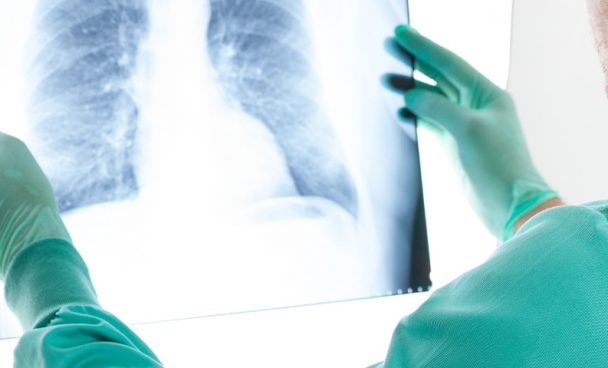Before we talk about lung cancer treatment, it is important to know about the different types of treatment available. From 80 to 85% of lung cancers are of the non-small cell lung cancer (NSCLC) type, while 10 to 15% belong to the group of small cell lung cancer (SCLC).
NSCLC is usually an adenocarcinoma, squamous cell carcinoma, or large cell (undifferentiated) carcinoma. Other types, such as adenosquamous carcinoma and sarcomatoid, although less likely, can also occur.
SCLC is more likely to grow and spread faster, with about 70% of patients having metastases at diagnosis. In this context, surgery is rarely used as the main therapeutic option – SCLC tends to respond better to chemotherapy and radiotherapy.
The main purpose of lung cancer surgery is to remove the tumor and eliminate the disease, but it can also be used to relieve symptoms in more advanced and terminal cases.
Types of cancer surgery
If the doctor recommends surgery, a lung function test must first be performed – this checks whether the patient will still have enough functional lung tissue after the procedure. Other tests will check the function of the heart and other organs to confirm that the patient is physically fit for surgery.
Some types of surgery can be used to treat (and, in some cases, cure) lung cancer, whether NSCLC or SCLC. In any case, adjacent lymph nodes are removed to analyze possible metastases. Surgical procedures are done under general anesthesia and require a large surgical incision between the ribs on the side of the chest or back, called a thoracotomy.
The technique chosen will depend on the size and location of the tumor, in addition to lung function. The main ones are:
Pneumonectomy: A procedure in which the entire lung is removed. It is usually used when the tumor is close to the center of the chest;
Lobectomy: The lungs have five lobes, three on the right and two on the left. In this surgery, the lobe that contains the tumor is completely removed. Whenever possible, this is the most used technique in CPNPC;
Segmentectomy or wedge resection: only part of the lobe is removed. It is usually done when the patient does not have enough normal lung function to support removal of the entire lobe;
Sleeve resection: this procedure can be used to treat types of cancer that are in the larger airways of the lungs. To understand this technique, imagine that the airway affected by the tumor is the sleeve of a shirt and that it has a stain a few centimeters above the wrist. Sleeve resection would be like cutting the sleeve (airway) above and below the spot (tumor) and then sewing the cuff back onto the remaining sleeve. It can be done in place of pneumonectomy, as a way to preserve more lung function.
With the development of robotic surgery, the applicability of the technology for the treatment of both small cell and non-small cell lung cancer, regardless of the technique of choice (pneumonectomy, lobectomy or segmentectomy), has been increasing.
Possible adverse effects of surgery
Surgery for lung cancer is a complex procedure that can have some adverse effects and complications. The patient may experience a reaction to anaesthesia, excessive bleeding, shortness of breath, clots in the legs or lungs, pain, surgical wound infection, and pneumonia.
Recovery from lung surgery usually takes a few weeks. If the procedure is performed through thoracotomy, the surgeon will need to spread the ribs apart to reach the lung. For this reason, there may be pain at the incision site for some time.
